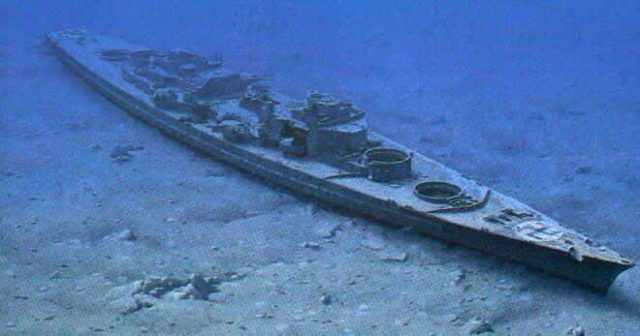Scuttling is a powerful act during times of war. The deliberate act of sinking a ship by letting water flow into the hull takes major weapons and much-needed resources from your enemy..
There are several ways that scuttling can be done. The enemy can open hatches or valves, rip holes in the hull using explosives or brute force, or by other means of sabotage.
This can also be done to dispose of an old, unusable or abandoned vessel, or a vessel that has been captured during an act of war.
It can be used to keep the vessel from resulting in navigation issues at sea, or it can be an act of self-destruction to avoid enemy capture.
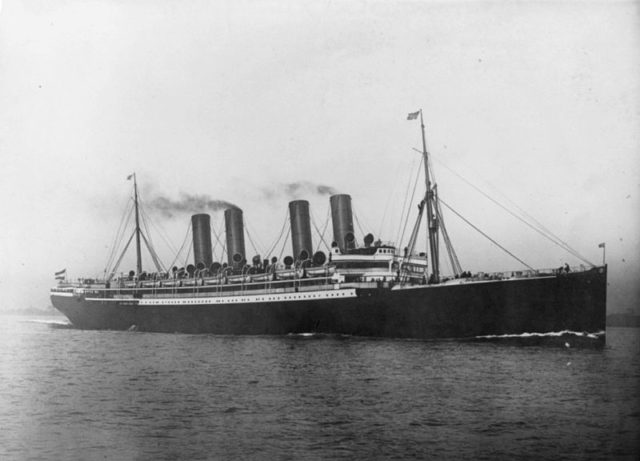
There are other reasons for scuttling as well, such as creating a blockship to limit navigation through a harbor or channel or to create an artificial reef that divers can visit, and marine life can call home.
The Japanese scuttled four aircraft carriers during the wars.
SS Kaiser Wilhelm der Grosse was requisitioned by the Kaiserliche Marine for conversion to an auxiliary cruiser in August 1914.
Fitted with 4-inch guns and two 37mm guns, she was sent to war.
Two passenger ships carrying women and children were spared by her, but she sank two freighters before meeting her fate on August 26, 1914.
She was refueling in Western Africa off the shore of Rio de Oro when HMS Highflyer, a British cruiser, opened fire.
The auxiliary cruiser was outgunned and ran short of ammunition, so her crew abandoned ship and scuttled her, but British sources insisted she sank because of the damage they inflicted.
As the only German warship to escape the destruction at the Battle of The Falkland Islands in December 1914, SMS Dresden did well eluding British pursuers for months until reaching Mas a Tierra in March 1915.
With almost no coal remaining for her boilers and her engines almost worn completely out, she was trapped by British cruisers who opened fire on the ship and violated Chilean neutrality.
The future Admiral Wilhelm Canaris, who was the executive officer of the Dresden, negotiated with the British which enabled him to buy enough time for his shipmates to scuttle the ship.
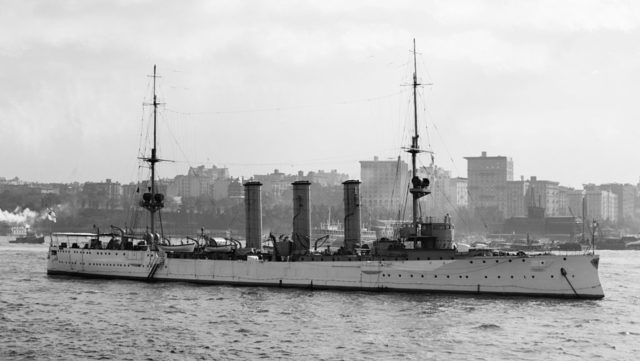
Three outdated British cruisers that were being used as blockships were involved in the Zeebrugge Raid at the Belgian port of Bruges-Zeebrugge, which was being held by Germany.
It was in that area where German u-boat operations had become a threat to British shipping. Iphigenia, Intrepid, and Thetis were filled with concrete and sent to block a canal that was critical.
Defensive fire resulted in the premature scuttle of Thetis, but the other two cruisers successfully sank themselves in the narrowest part of the canal. But three days later the Germans broke through the canal’s western bank to create a shallow detour that enabled their submarines to maneuver past the blockships during high tide.
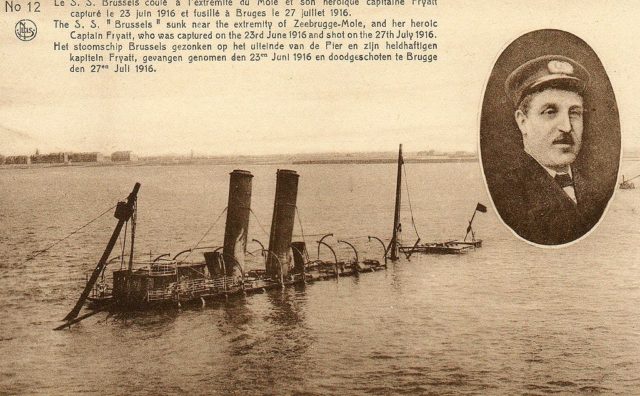
More than 50 of the German High Seas Fleet warships were scuttled by their crews in 1919 at Scapa Flow during the deliverance of the fleet as part of the German surrender terms.
Rear Admiral Ludwig von Reuter ordered the sinkings of the ships to keep the British from getting them. Because of his actions, von Reuter was made a prisoner of war by Britain, but his defiant final war act made him a hero in Germany.
Engineer Ernest Cox subsequently salvaged most of the fleet, but there are at least three battleships remaining underwater, making it a popular spot for divers.
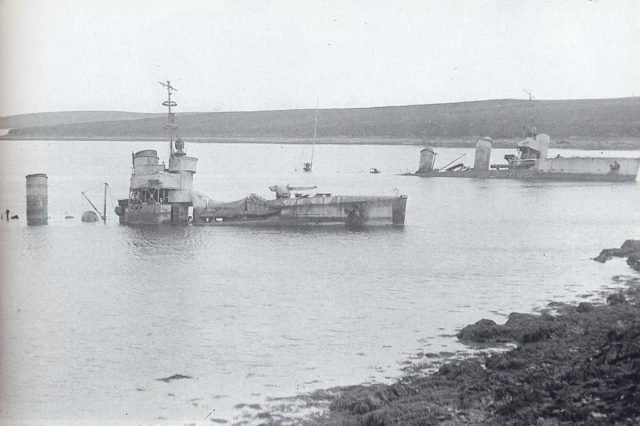
After the Battle of the River Plate, the German pocket battleship Admiral Graf Spee went to the port of Montevideo for refuge.
It was there on December 17, 1939, that Capt. Hans Langsdorff sailed the ship just outside the harbor and scuttled it to avoid risking the lives of his crew because of HMS Cumberland, HMS Ajax, and HMNZS Achilles were waiting in international waters just outside the Rio de la Plata’s mouth.
Langsdorff felt it would be a losing battle, so sinking the ship was the choice he made. Just three days after scuttling his ship, he shot himself.
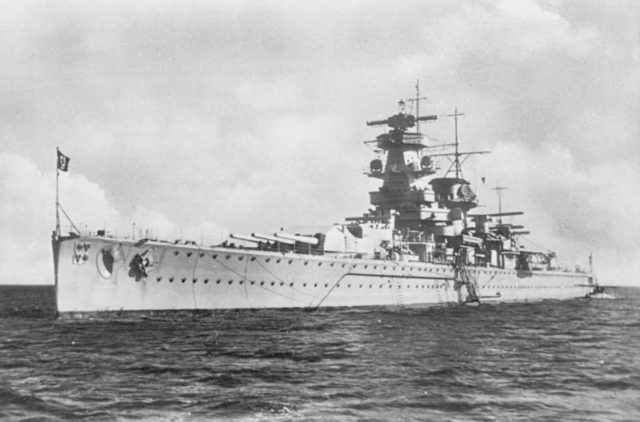
On January 21, 1941, land forces from the British and the Commonwealth attacked Tobruk. The San Giorgio, an Italian cruiser, turned its guns against the troops who were attacking to repel the tanks.
British forces were entering Tobruk when San Giorgio was scuttled at 4:15 a.m. on January 22. The ship received the Gold Medal of Military Valor for her actions defending Tobruk. The ship was salvaged in 1952, but as she was towed to Italy the tow rope failed, and she sank in heavy seas.

The Brenta, which contained a booby trap in one hold made of a naval mine that was armed and set upon three active torpedo warheads was a problem during the salvage of the San Giorgio.
Regia Maria minelayer Ostia, which sank after an attack from the Royal Air Force still had mines racked. There were an additional 13 coastal steamers and small naval vessels scuttled.
To clear a navigable passage through the wrecks, a civilian contractor took a year to make headway in the effort to return Massawa to military duties.
It was April 1942 when U.S. Navy Commander Edward Ellsburg arrived with his tools and a salvage crew to fix the damage.
In just 5 ½ weeks, on May 8, 1942, the SS Koritza, which was a Greek armed steamer, was being cleaned and undergoing minor hull repairs while it was drydocked.
Massawa’s first major surface fleet client ended up being the HMS Dido, which needed repairs for its severely damaged stern in August 1942.
Many of the ships sunk in the harbor were patched by divers then refloated and repaired before being put back into service.
Despite the armed mines onboard, the Brenta and Ostia were successfully salvaged.
The Royal Navy inflicted heavy damage on the Bismarck, a German battleship, in 1941.
It was left leaking fuel and unable to maneuver without effective weapons, but still afloat.
To avoid capture, her crew reportedly scuttled her, which was supported by the reports of survivors and by examination of the wreck itself in 1989.
A later examination discovered four torpedoes had penetrated the ship’s second deck, but that was normally above water and could only have occurred on a ship that was already sinking.
Following the Battles of the Coral Sea and Midway in 1942, the American aircraft carrier the Lexington, along with the Japanese carriers, Kaga, Akagi, Hiryu, and Soryu were scuttled to prevent use and preservation by their enemies.
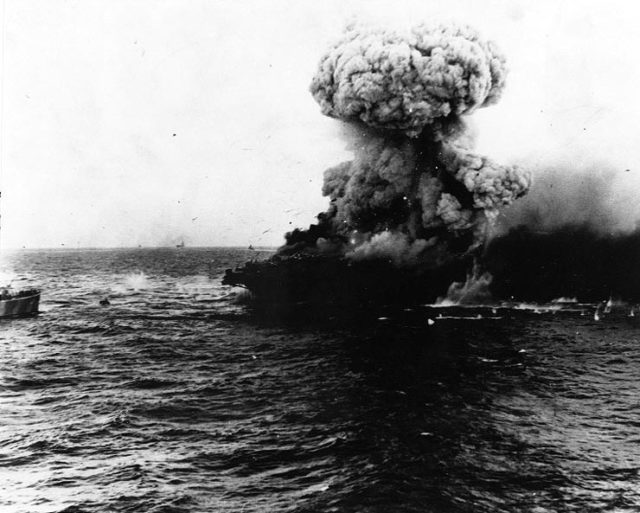
An operation codenamed Case Anton occured in November 1942, when Nazi German forces occupied a ship in response to the Allies landing in North Africa.
They reached Toulon on November 27, where most of the French Navy had anchored. To prevent Nazi capture, the French commanding admirals decided it was best to scuttle the 230,000-ton fleet, which included the battleships Dunkerque and Strasbourg.
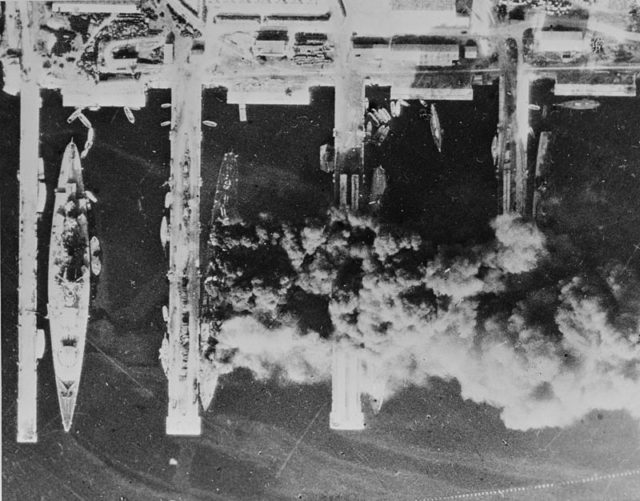
About 80% of the fleet was destroyed, and none of the capital ships were repairable. The scuttling was permitted legally under the terms of the Armistice with Germany in 1940.
